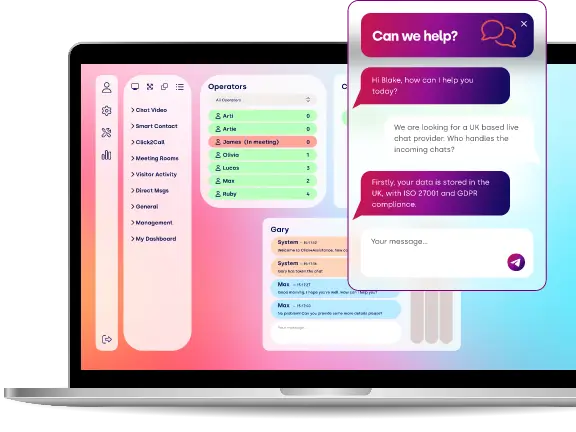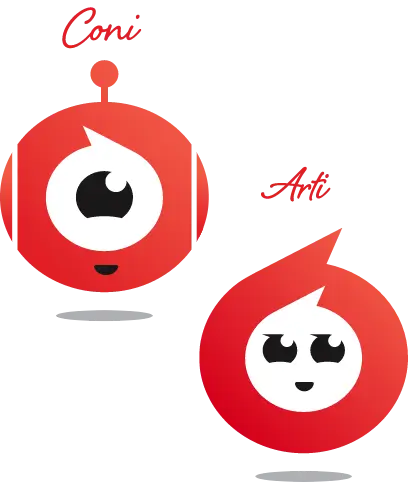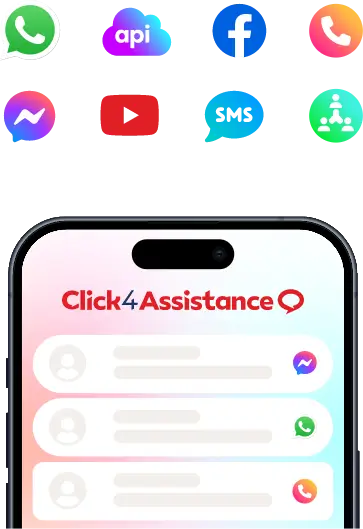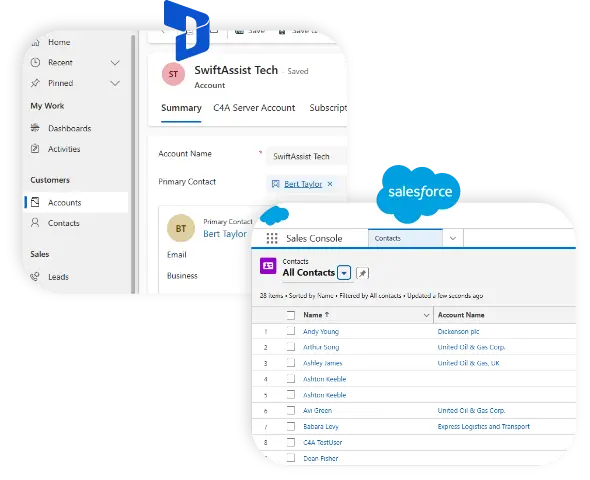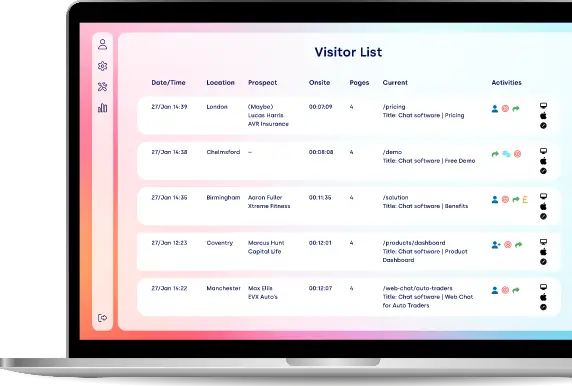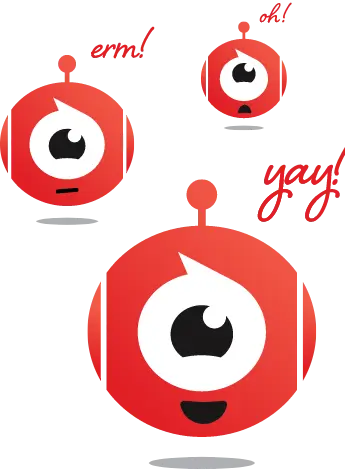Live Chat Widget: Your Ultimate Guide to Real-Time Customer Engagement
A live chat widget turns your website into a 24/7 support centre, connecting with visitors through chat buttons, pop-up windows and proactive prompts.
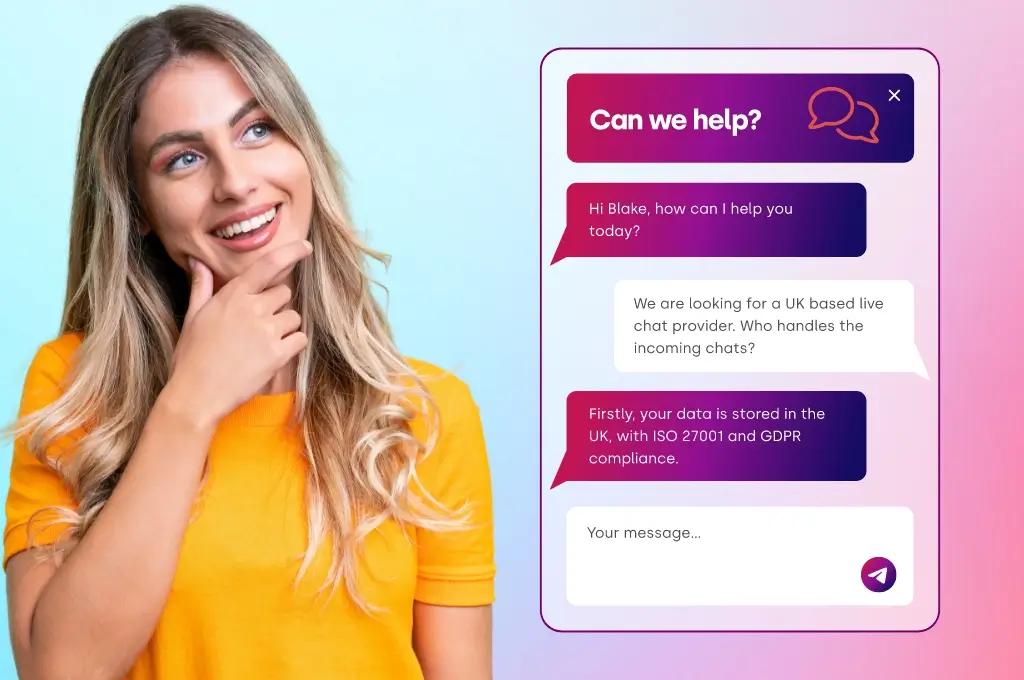
In today’s digital world customers expect instant responses. Waiting hours or even minutes can seem like an eternity. That’s where a live chat widget comes in, turning your website from a static brochure into a live hub. These small pop-ups can increase engagement, customer satisfaction and ultimately drive sales. If you want to see how live chat can transform your business take a look at Click4Assistance’s live chat service for a demo of the full solution.
Think of a live chat widget as the face of your website. It’s always available to answer questions, help visitors or provide support without disrupting their browsing experience. Whether it’s a chat button in the corner, a pop-up chat window or a proactive invitation to start a conversation, every element works together to create a seamless customer journey.
In this guide we’ll cover chat button placement to chat window design and proactive engagement techniques so you can get your website ready for real-time customer interaction.
What is a Live Chat Widget?
Before we get into the details, let’s answer the most important question: what is a live chat widget? In short, it’s a small interactive feature on your website that allows visitors to talk to your business in real-time. Think of it as a digital concierge or personal assistant - always available to answer questions, help visitors or support.
A live chat widget typically has three main parts:
- A chat button (the entry point)
- A chat window (where the conversation happens)
- Optional proactive messages (which encourages users to start a chat before they ask)
It can be run by humans, AI or a mix of both so it’s super flexible.
In essence it turns your website from a static page into a communication hub where visitors can get answers quickly and easily.
one customer experience expert so aptly puts it “A live chat widget is the difference between a visitor leaving confused and a visitor leaving satisfied and informed.”
The Chat Button: Your Website's Invitation to Chat
Think of the chat button as the first hello between your website and your visitor. It’s the clickable icon usually in the bottom-right corner that says “Hey we can help!”
Design and placement are key. Bright, contrasting colours and gentle animations grab attention without being too much. Some businesses even add micro copy like “Chat with us!” or “We’re online!” to personalise the interaction. Placement is important - usually in the bottom-right corner - but make sure it’s visible on desktop and mobile.
The Chat Window: Where Conversations Happen
Click the chat button and the chat window opens. This is where the magic happens. A well-designed window has:
- Header: Your branding, agent details or even a welcoming image.
- Message area: The conversation is displayed clearly with chat bubbles for the visitor and the agent.
- Input field: Where visitors can type their messages, with the option to send attachments or emojis.
- Footer or quick links: FAQs, help articles or even a “book a call” feature.
Customisation is key. Colours, fonts, animations and welcome messages make it feel personalised and inviting. Chatbots can automate greetings or respond to simple questions before a human agent takes over.
As one study says “Speed and clarity in a chat window affects customer satisfaction - no one likes to wait for responses”.
Proactive Chat: Engage Visitors Before They Ask
Now let’s talk about proactive chat. Instead of waiting for the visitor to initiate contact the widget can pop up with a friendly message like “Need help choosing the right plan?”.
Triggers for proactive chats can be:
- Time-based: Shows up after a visitor has been on a page for a few seconds.
- Behaviour-based: Activates after scrolling, hovering or exit intent.
- URL-based: Triggered on specific pages like pricing or checkout.
The key is subtlety. Friendly conversational language works best, e.g. “Hi there! Can I help you find the right solution?” instead of commands.
Proactive chat works best with human agents. Automation starts the conversation but a seamless handover ensures personalised support and keeps visitors happy and engaged.
Learn more about proactive customer engagement strategies.
How Do Live Chat Widgets Work?
Ever wondered what happens when you click that little chat bubble in the corner of a webpage? It seems simple but behind that friendly icon is a clever system designed to connect visitors with agents in real-time.
At its core a live chat widget is a small piece of JavaScript code on your website. This code loads the chat interface (button, window and proactive prompts) and links it to a backend platform where your customer support team or AI chatbot handles the conversations.
From a technical perspective it’s like a two-way radio for your website. The front end (what visitors interact with) takes care of design and user interactions, the back end (what your team manages) takes care of messages, routing and storage. The result? A seamless real-time conversation between the customer and the business, without anyone having to refresh the page.
The Chat Journey: From Click to Conversation
Here's how it works:
- The visitor clicks the chat button. This triggers the live chat widget and opens the chat window.
- A welcome message is displayed. This could be an automated “Hello!” from a chatbot or a customised greeting from a human rep.
- The user types and sends a message. The widget securely captures and sends the message to the live chat server.
- An agent (or chatbot) replies. Depending on your setup, the system either hands the conversation to an available agent or manages it with AI.
- Data is logged. Every message, timestamp and interaction is recorded – for follow-ups, analytics and CRM integration.
All of this happens in milliseconds. The visitor gets instant responses, while your team manages messages through a custom dashboard or CRM tool.
The Agent Dashboard: Your Team's Command Centre
At the heart of every great live chat experience is a solid agent dashboard. This is where your customer service, sales or marketing teams monitor and manage conversations in real time.
A standard dashboard will have:
- Chat queues and routing: New chats get directed to available agents or specific departments.
- Typing indicators: Shows when the visitor or agent is typing so it feels more natural.
- Canned responses: Pre-prepared answers for frequently asked questions—quick and painless without sounding robotic.
- File sharing and multimedia support: Agents can share documents, screenshots or product images directly in the chat.
- Visitor insights: Instant info on user location, browsing history and page history.
A customer support leader puts it perfectly: “Your live chat dashboard isn’t just a tool - it’s your digital front desk. It helps your team greet every visitor like a VIP.”
Plus, agents can multitask, manage multiple chats at once—something phone support just can’t do.
Automation and AI: Intelligent Support at Scale
Modern live chat tools use AI technology so you can manage many conversations at once. AI chatbots can welcome visitors, answer frequently asked questions, qualify leads and even transfer chats to human reps when needed.
For example, a chatbot could answer initial questions like “What are your business hours?” or “Do you ship internationally?” so human agents can focus on the harder questions.
Many chat widgets use natural language processing (NLP) to understand user intent so the conversation feels human not robotic. As one industry pro said “The best chatbots don’t replace humans – they augment them.”
Automation also includes proactive chat features. The system can automatically detect when a visitor hesitates during checkout or spends extra time on the pricing page and send a friendly message like “Do you need help with your order?” This gentle nudge often turns uncertain visitors into paying customers.
Many chat widgets use natural language processing (NLP) to understand user intent so the conversation feels human, not robotic.
Data Collection and Analytics: Turning Chats into Insights
Every chat generates data. The live chat widget tracks visitor actions, chat length, response time, and satisfaction scores. Over time these numbers give you deep insight into how visitors are using your website.
Some of the analytics you can track:
- Average response time
- Customer satisfaction (CSAT) scores
- Conversion rates from chat
- Common issues or questions visitors are asking
- Agent performance metrics
By connecting chat data to your CRM or marketing tools you can follow up, create personalised email campaigns and build long term customer relationships. In short your live chat widget not only solves issues it helps your business learn and grow.
Security and Privacy: Building Trust Through Transparency
In today’s digital world, privacy is a top priority for customers. A trustworthy live chat widget uses SSL encryption to keep conversations private. Many also include features that align with GDPR regulations, like consent checkboxes and options for users to delete their data.
Being transparent helps build trust. Letting users know that their chats are secure and that their information won’t be shared creates a positive impression of your brand.
As customer experience expert Maria Lewis put it: “Trust is the currency of online business. Every chat should feel private, safe, and respectful.”
In summary, while a live chat widget might seem like a small feature at first, it’s actually a sophisticated system that connects technology, people, and data in real-time. From the moment a user clicks on that chat bubble to when your agent responds, a whole range of processes work together behind the scenes to make sure the conversation flows smoothly, securely, and is personalised just for the user.
Your Brand, Your Chat Window
Customise every aspect of your chat window and widget from colours to icons for a smooth on-brand customer journey.
Key Benefits of Using a Live Chat Widget
- Instant Support and Satisfaction
One of the biggest benefits of a live chat widget is instant support. Unlike email which can take hours or even days to respond, live chat gives you instant answers. No more waiting for visitors to leave the page.
Imagine this: a customer is on your pricing page, unsure which plan to choose. Suddenly a timely proactive chat pops up and helps and answers questions in real-time. Instead of leaving the page feeling frustrated, the visitor now feels supported and can make a decision.
As customer service expert Linda Martinez says: “Real-time support doesn’t just resolve, it builds trust. Customers remember the brands that were there for them when they needed help.”
The chat window is where this magic happens. Its conversational layout, typing indicators and personal touches (agent names or avatars) make interactions feel natural, human and comforting.
- More Conversions and Lead Generation
A live chat widget is not just a support tool but a conversion booster.
When placed on high intent pages like product listings or checkout processes, chat buttons act as gentle nudges. Visitors who are hesitant to buy or sign up get a direct line to help and that increases the chances of conversion.
Proactive chat messages can be a game changer. For example, a visitor is on a subscription page and gets a pop up: “Hi! Need help choosing the right plan?” That one interaction can turn uncertainty into action.
The widget also acts as a lead capture tool. Even if a visitor doesn’t convert right away the chat can collect emails, qualify leads and put information into your CRM so your sales team has follow up opportunities.
- Cost-Effective Support Solution
Live chat support is often more efficient and cost effective than traditional phone support.
Why is this? Because agents can handle multiple chats at once. Instead of one agent taking one phone call, they can support multiple customers at the same time — reducing staffing requirements while still providing great support.
Automation is also a big factor. Chatbots can answer common questions like “What are your hours?” or “Do you ship internationally?” so human agents can focus on more complex issues that require personal attention. This keeps costs low and customers happy.
- Better Brand Perception and Trust
A professional and clean live chat widget improves your brand image. Today’s consumers expect instant communication and having a visible chat button or a nice chat window means your business is available, responsive and modern.
Customising the widget to match your brand’s identity - through colours, fonts and tone - keeps consistency across the user experience. Even well-crafted proactive messages show you care and are paying attention to the visitor’s needs.
Remember, trust is built not just through functionality but through design. Visitors associate a clean and user-friendly chat experience with a trustworthy brand.
- Valuable Insights and Analytics
Every live chat interaction gives you data. By looking at conversation trends, common questions and visitor actions, you can get actionable insights.
For example:
- Which pages are getting the most chat requests?
- Which products or services are getting the most questions?
- How fast are agents responding and are customers happy?
This data not only makes chat more efficient – it shapes your website design, content strategy and overall customer journey. Essentially your live chat widget is a support tool and a business intelligence tool.
- Competitive Advnatage
And think about this: if your competitors don’t have real-time support, your live chat widget is a key differentiator. It shows visitors that your business values their time and experience. Even a small increase in engagement can lead to more sales, better retention and more customer loyalty.
As one marketer put it: “In a crowded online space, the brands that respond quickly and empathetically win. Live chat is no longer a nice to have – it’s a must have.”
From speeding up support to increasing conversions and building trust, the benefits of a live chat widget are clear. It combines real-time interaction, automation and valuable analytics to make a more responsive customer focused website. A simple pop up with a chat button can make a big impact on your profits and overall user experience.
Best Practices for Designing and Using Live Chat Widgets
- Make the Chat Button Visible
The chat button is the first thing visitors see. Make it visible but not obtrusive, use contrasting colours, gentle animations and micro copy like “Chat with us!” Experiment with its position especially on mobile devices to increase click through rate.
- Make the Chat Window Intuitive
A simple and user-friendly chat window encourages more engagement. Add typing indicators, chat bubbles and welcoming messages. Quick replies or shortcuts can speed up response times. If a bot is in use make sure there’s a seamless transition to human agents for more complex questions.
- Use Proactive Chat Wisely
Proactive chat messages can increase conversions when timed right. Use behaviour-based triggers like scroll depth or time on page and keep the tone friendly: “Hi! Can I help you find the right plan?” Always give users the option to close the pop up.
- Find the Right Balance of Automation and Human Touch
Automation can handle repetitive questions but personalised support should be handled by humans. Be transparent – make it clear when visitors are talking to a bot vs a live agent.
- Test and Optimise Continuously
Test A/B the button position, chat window design and proactive messaging timing. Keep an eye on analytics like engagement, response time and satisfaction ratings to always improve your widget.
Common Mistakes to Avoid with a Live Chat Widget
Even the best live chat widget can fail if it hasn’t been implemented right. Here are some common pitfalls to watch out for:
- Too Aggressive Proactive Chats
Pop-ups that show up too often or too soon will annoy visitors instead of helping them. Timing is everything - give users a few seconds to get used to the page before sending a proactive message.
- Not Mobile Optimised
A chat button that looks good on desktop but overlaps with content or disappears on mobile will frustrate users. Make sure both the chat button and window are fully responsive for smartphones and tablets.
- Not Brand Consistent
The chat widget should match your website’s colours, fonts and tone. A widget that doesn’t match feels out of place and can harm your brand.
- Slow Response Times
A chat window is only good if someone is there to respond. Long wait times will frustrate visitors and lose you opportunities. Make sure you have enough staff and consider using automated greetings to keep users engaged until an agent is free.
- Relying Too Much on Automation
While chatbots are helpful, too much of them can make the experience impersonal. Make sure users can easily escalate to a human agent for complex or sensitive issues.
How to Choose the Right Live Chat Widget Tool
Choosing the right live chat widget is crucial. With so many options out there, you need one that fits your business needs, integrates with your website and improves customer experience.
Key Features
A good live chat widget should have
- Customisable chat buttons and windows that match your brand.
- Proactive messaging and behavioural triggers to engage visitors at the right moment.
- Integration with your CRM, marketing automation or helpdesk tools to centralise all customer data.
- Mobile and multi-language support for a global audience.
- Analytics and reporting to track engagement, agent performance and customer satisfaction.
Ease of Implementation
Some widgets just need a simple JavaScript snippet, others are plugins for platforms like WordPress, Shopify or Magento. How easy is it to install, configure and maintain your chosen tool?
Support and Uptime
A tool’s effectiveness is determined by its uptime and customer support. Make sure the provider delivers reliable service and quick technical support. Any downtime or issues with your chat widget can harm customer satisfaction and conversion rates.
Automation and Human Touch
Look for a tool that offers a balance of automation and human support. Chatbots can handle FAQs and repetitive questions, but live agents should be ready to jump in for more personalised help when needed.
Scalability and Pricing
Think about your future needs. Can the tool handle more traffic? Does it support multiple agents or departments? Make sure the pricing plan matches your team size and growth.
Choosing the right live chat widget can make the experience clunky and frustrating or smooth and engaging, and ultimately boost conversions, satisfaction and loyalty.
Frequently Asked Questions (FAQs)
- What is a live chat widget?
A live chat widget is a small interactive element on your website that allows visitors to chat with your business in real time. It’s usually a chat button, chat window and optional proactive messages.
- How does a live chat widget improve customer experience?
It offers immediate support, reduces wait times and gives visitors answers straight away. Tailored interactions and proactive engagement makes users feel heard and understood.
- Can I integrate a chatbot with a live chat widget?
Yes. Chatbots can handle repetitive questions, qualify leads and provide instant responses, while human agents can handle more complex or personalised conversations.
- Where should I place my chat button?
The bottom right is the usual place, but it should be noticeable, not intrusive and mobile optimised. Experiment with placement to increase clicks and engagement.
- What are the common mistakes to avoid with live chat widgets?
Avoid pop ups, delayed responses, not mobile optimised, over reliance on automation and inconsistent branding. Timing, personalisation and usability are key.
Conclusion
A live chat widget isn’t just a little pop up on your website; it’s a powerful tool for engagement, support and conversions. From the chat button that invites visitors to start a conversation, to the chat window where real time interactions happen, to the proactive messages that help users even before they ask, every piece is important to the customer experience.
By understanding how live chat works, choosing the right tool and following best practices, businesses can offer instant support, gather valuable insights and boost brand perception. The benefits are clear: faster responses, more conversions, lower support costs and happier customers.
Remember balance is key. Use automation for repetitive tasks but keep the human touch for personal meaningful interactions.
As one customer experience strategist puts it: “The brands that respond quickly, intelligently and personally are the ones that win online.”
A well-executed live chat widget turns a website into a living breathing hub – ready to help, guide and convert visitors at any time.
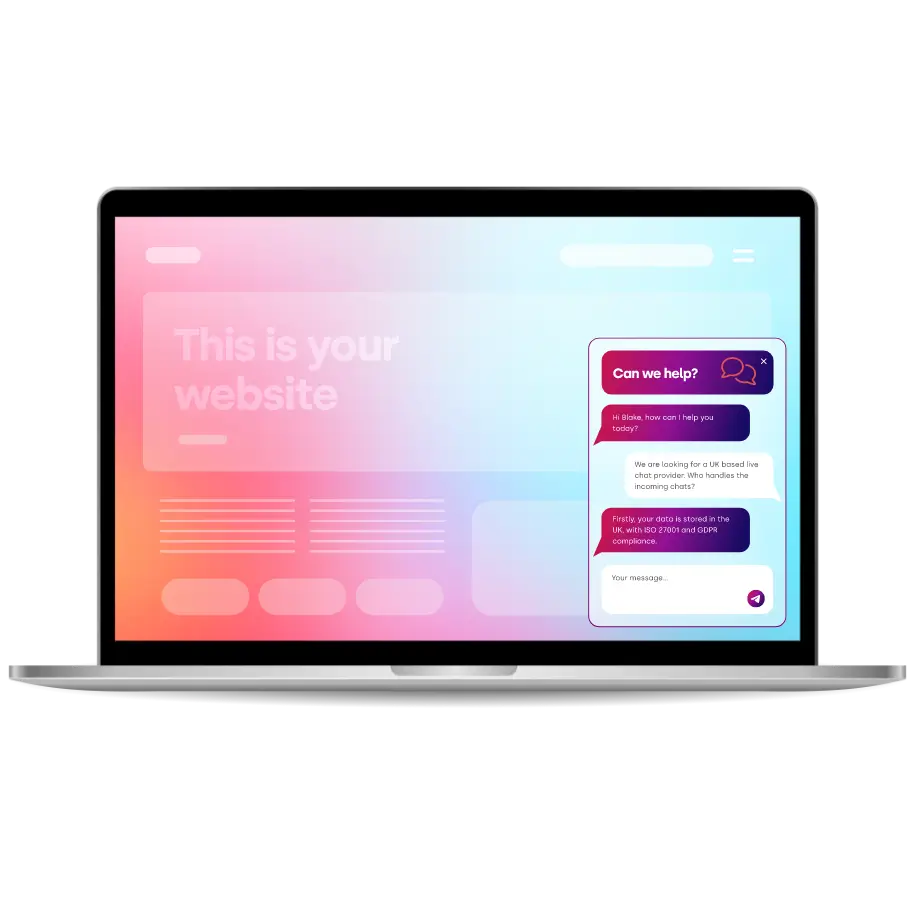
Thousands Trust Us. Will You?
From live chat to AI-powered chatbots and social integrations, Click4Assistance powers real-time engagement - fully UK hosted and trusted across industries.
